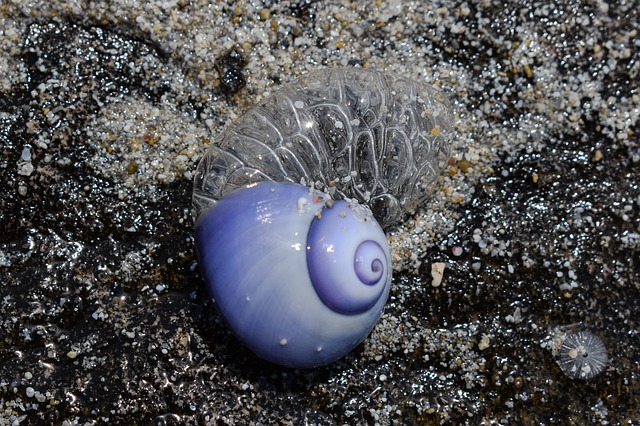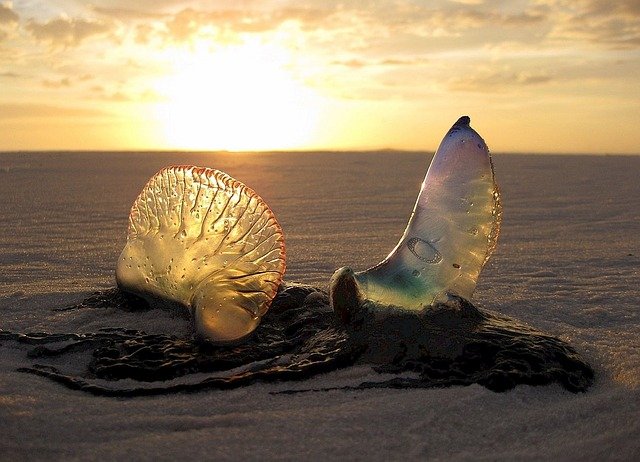If you have ever been to a beach where a Portuguese Man-Of-War jellyfish has washed up onto shore, you might also have seen the glorious Purple Sea Snail close by.

These light-as-air snails live their entire lives upside down and attached to a living Portuguese Man-Of-War. The purple and blue colors of the air sack of these jellyfish have made them a pretty addition to the high tide line of the beach. But do not touch them! They are true members of the Jellyfish family and the stinging cells (called Nematocysts) are able to release their poisonous barbs even after they are dead. But the Purple Sea Snail is able to consume these stinging cells and store and reuse the stings themselves. They also acquire their beautiful purple coloration as they feed on the body of the Man-Of-War.
These are not your ordinary, everyday snails for many reasons. They spend their whole lives floating at the top of the ocean in an upside down position. They are able to maintain their buoyance due to the “bubble float” that each snail constructs by trapping tiny bubbles of air in thin membranes. These bubbles stick to all the other bubbles in order to form a life raft that attaches to the snail’s body and shell. They even lay their eggs in bubble rafts that also float near the parent.
The reason for this lifestyle is based on the feeding habits of all the species of Purple Sea Snails. The Man-Of-War jellyfish is both their home and dinner. They will remain attached to a jellyfish for life or until some accident causes the “bubble float” to be separated from the snail. If that event occurs, the snail will sink to the bottom and die.

Janthina janthina is the scientific name for the Purple Sea Snail and they can be found in every warm-water sea or ocean around the world. But the most special adaptation that Janthina illustrate is the ability to be almost invisible to any predator, whether from above or below.
When looking at the Purple Sea Snail from below as a fish would, the pale coloring would be difficult to see when peering up at the light of the sky. On the other hand, gazing down at the Janthina janthina as would a bird, the darker tones of purple would easily blend with the depths of the body of water it which it floats.
In years past, these beautiful and unusual mollusks were plentiful and were easily found in great numbers on Texas beaches along with their jellyfish host after being washed ashore at certain times of the year. As the number of the Man-Of-War jellyfish has declined in numbers, so also has the number of Janthina janthina. Though both can still be found on local beaches, their reduced numbers make it a rare, and special, find.

Just remember that the Man-Of–War is a jellyfish and even though it may be dead on the beach those stinging cells can still be active and deliver a painful sting. So always treat sea life with caution and respect for the almost limitless ability to protect themselves in ways that are not always evident. If you should happen to find one of these fragile and beautiful mollusks on the seashore, remember all the special adaptations that one small family of mollusks has found to survive.

